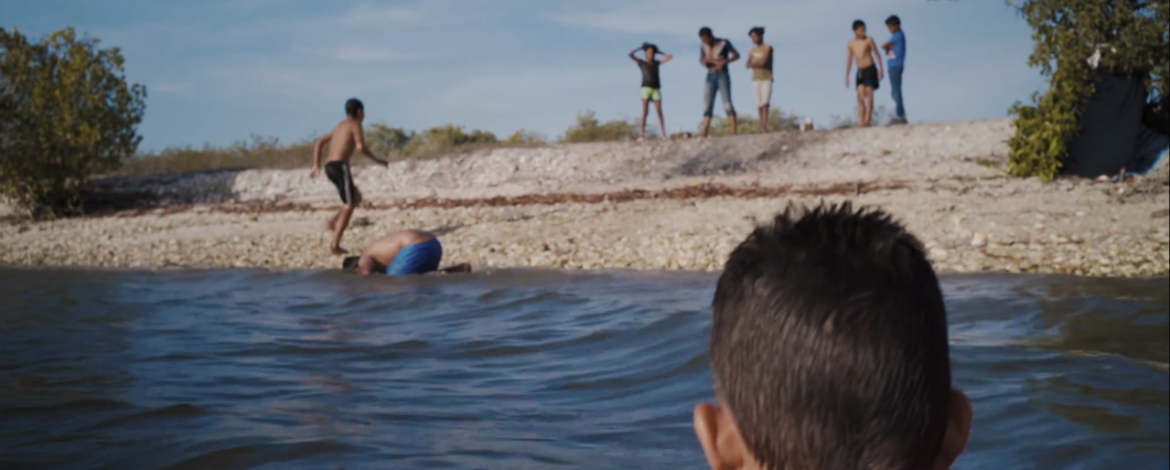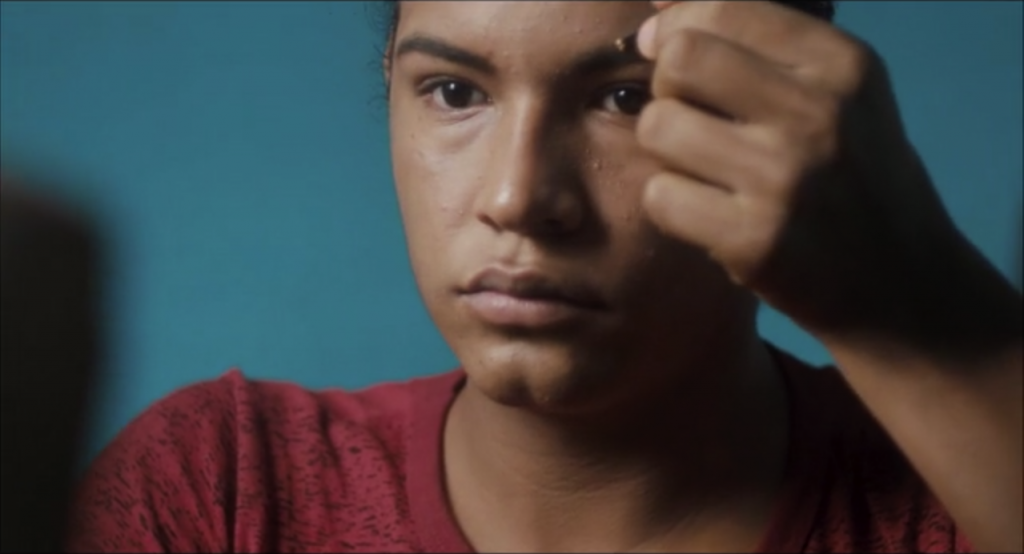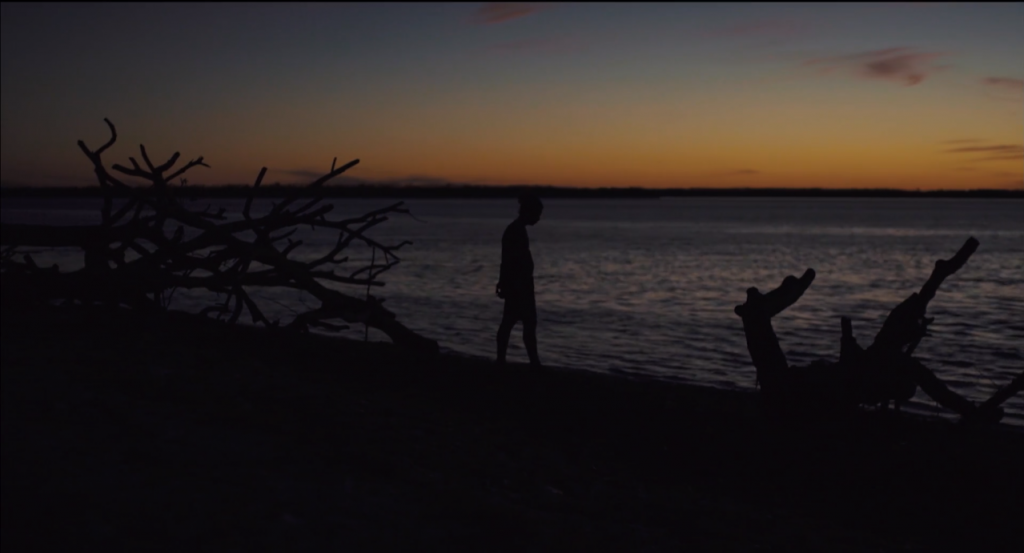

Cosas que no hacemos is a story about youth—about children who, in large part left to their own devices, must become ready to understand and navigate a society that perhaps isn’t ready for them.
The film makes clear from the outset that the children featured are profoundly independent, be it their own volition or a consequence of neglectful adult figures. We see the children tripping over one another to accept gifts from “Santa Claus,” uninhibited by the potential danger of a stranger in a flying machine unloading packages from the sky. We see them creating their own games and their own dance routines. Even when we make our way to the classroom, the camera maintains focus squarely on the students, as the teacher does not make a physical appearance within the scene’s duration. Director Bruno Santamaría elects not to employ standard camera blocking or narrative structure—he works, instead, to illustrate the world through the eyes of children, in turn creating authority figures that are largely not integral. Children, after all, often choose to spend time playing or merely existing with other children before they’d ever consider doing so with an adult.

The film’s major turning point arguably takes place during a town dance, wherein a public shooting leaves at least one individual dead. We don’t see the guns, we don’t see the body—we’re only given the popping sounds of ammunition before a muffled panic and fade to black. Santamaría’s decision to return to the playground where the party was hosted the next day creates something of a surreal experience for audiences: a basketball hoop that once hung decorations is now riddled with bullet holes. A pool of blood remains from the incident, and instead of scaring or scarring the children as we might expect, the blood is met with curiosity and excitement. Prior discussions about Santa Claus and fiestas are now replaced by questions about who was killed. How many bullets were fired? Fourteen? Fifteen? How many shooters were there in total? Where did the victim fall?
Santamaría effectively explores how young children are affected by violence—they might need to disregard the seriousness of the situation as a way of coping with it. Or, perhaps more tragically, violence might have become a normality, so much so that a murder occurring on their playground leaves the children relatively unfazed. One of the teens affected by the shooting wonders whether the police even came to their aid that night, not sure how much he trusts in the expectation that they’ll always do what’s right. If nothing else, this illustrates how deeply the distrust in adult figures runs, and how little the children have come to depend on them.
The heart of the film is its child stars, as we stick with them through internal and external hardship. One of the older children, for example, dreams of dressing and dancing as a woman but cannot imagine expressing such a desire to his parents. This is without question a “cosa que no hacemos” in a Mexican culture dominated by machismo, where the word ‘fag’ is thrown out casually at a party, or the settling of a score can lead to murder on the playground. Regardless of sexuality, such a struggle is a mainstay of adolescence, as one comes into oneself in a manner that might not necessarily jive with expectation. Children and teens must grapple with social norms they do not agree with, and learn difficult life lessons without always having a parental figure to aid them along the way. Santamaría crafts a compelling narrative that explores this facet of childhood, questioning how children might see the world if they discovered it alone, and the role of parents in stepping in or stepping back from their childrens’ lives.
